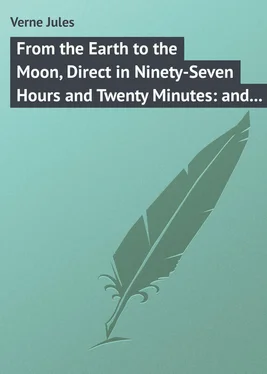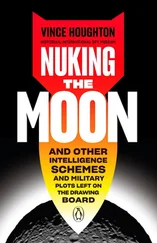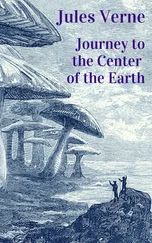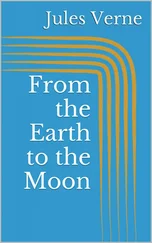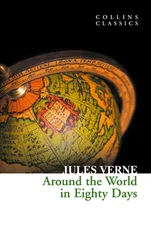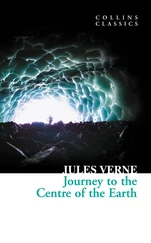Jules Verne - From the Earth to the Moon, Direct in Ninety-Seven Hours and Twenty Minutes - and a Trip Round It
Здесь есть возможность читать онлайн «Jules Verne - From the Earth to the Moon, Direct in Ninety-Seven Hours and Twenty Minutes - and a Trip Round It» — ознакомительный отрывок электронной книги совершенно бесплатно, а после прочтения отрывка купить полную версию. В некоторых случаях можно слушать аудио, скачать через торрент в формате fb2 и присутствует краткое содержание. Жанр: foreign_prose, на английском языке. Описание произведения, (предисловие) а так же отзывы посетителей доступны на портале библиотеки ЛибКат.
- Название:From the Earth to the Moon, Direct in Ninety-Seven Hours and Twenty Minutes: and a Trip Round It
- Автор:
- Жанр:
- Год:неизвестен
- ISBN:нет данных
- Рейтинг книги:5 / 5. Голосов: 1
-
Избранное:Добавить в избранное
- Отзывы:
-
Ваша оценка:
- 100
- 1
- 2
- 3
- 4
- 5
From the Earth to the Moon, Direct in Ninety-Seven Hours and Twenty Minutes: and a Trip Round It: краткое содержание, описание и аннотация
Предлагаем к чтению аннотацию, описание, краткое содержание или предисловие (зависит от того, что написал сам автор книги «From the Earth to the Moon, Direct in Ninety-Seven Hours and Twenty Minutes: and a Trip Round It»). Если вы не нашли необходимую информацию о книге — напишите в комментариях, мы постараемся отыскать её.
From the Earth to the Moon, Direct in Ninety-Seven Hours and Twenty Minutes: and a Trip Round It — читать онлайн ознакомительный отрывок
Ниже представлен текст книги, разбитый по страницам. Система сохранения места последней прочитанной страницы, позволяет с удобством читать онлайн бесплатно книгу «From the Earth to the Moon, Direct in Ninety-Seven Hours and Twenty Minutes: and a Trip Round It», без необходимости каждый раз заново искать на чём Вы остановились. Поставьте закладку, и сможете в любой момент перейти на страницу, на которой закончили чтение.
Интервал:
Закладка:
Regarding the degree of intensity of its light, there was nothing more to learn on this point. It was known that it is 300,000 times weaker than that of the sun, and that its heat has no appreciable effect upon the thermometer. As to the phenomenon known as the "ashy light," it is explained naturally by the effect of the transmission of the solar rays from the earth to the moon, which give the appearance of completeness to the lunar disc, while it presents itself under the crescent form during its first and last phases.
Such was the state of knowledge acquired regarding the earth's satellite, which the Gun Club undertook to perfect in all its aspects, cosmographic, geological, political, and moral.
CHAPTER VI.
THE PERMISSIVE LIMITS OF IGNORANCE AND BELIEF IN THE UNITED STATES
The immediate result of Barbicane's proposition was to place upon the orders of the day all the astronomical facts relative to the Queen of Night. Everybody set to work to study assiduously. One would have thought that the moon had just appeared for the first time, and that no one had ever before caught a glimpse of her in the heavens. The papers revived all the old anecdotes in which the "sun of the wolves" played a part; they recalled the influences which the ignorance of past ages ascribed to her; in short, all America was seized with seleno-mania, or had become moon-mad.
The scientific journals, for their part, dealt more especially with the questions which touched upon the enterprise of the Gun Club. The letter of the Observatory of Cambridge was published by them, and commented upon with unreserved approval.
Until that time most people had been ignorant of the mode in which the distance which separates the moon from the earth is calculated. They took advantage of this fact to explain to them that this distance was obtained by measuring the parallax of the moon. The term parallax proving "caviare to the general," they further explained that it meant the angle formed by the inclination of two straight lines drawn from either extremity of the earth's radius to the moon. On doubts being expressed as to the correctness of this method, they immediately proved that not only was the mean distance 234,347 miles, but that astronomers could not possibly be in error in their estimate by more than 70 miles either way.
To those who were not familiar with the motions of the moon, they demonstrated that she possesses two distinct motions, the first being that of rotation upon her axis, the second that of revolution round the earth, accomplishing both together in an equal period of time, that is to say, in 27⅓ days.
The motion of rotation is that which produces day and night on the surface of the moon; save that there is only one day and one night in the lunar month, each lasting 354⅓ hours. But, happily for her, the face turned towards the terrestrial globe is illuminated by it with an intensity equal to the light of fourteen moons. As to the other face, always invisible to us, it has of necessity 354 hours of absolute night, tempered only by that "pale glimmer which falls upon it from the stars."
Some well-intentioned but rather obstinate persons, could not at first comprehend how, if the moon displays invariably the same face to the earth during her revolution, she can describe one turn round herself. To such they answered, "Go into your dining-room, and walk round the table in such a way as always to keep your face turned towards the centre; by the time you will have achieved one complete round you will have completed one turn round yourself, since your eye will have traversed successively every point of the room. Well, then, the room is the heavens, the table is the earth, and the moon is yourself." And they would go away delighted.
So, then, the moon displays invariably the same face to the earth; nevertheless, to be quite exact, it is necessary to add that, in consequence of certain fluctuations of north and south, and of west and east, termed her libration, she permits rather more than the half, that is to say, five-sevenths, to be seen.
As soon as the ignoramuses came to understand as much as the Director of the Observatory himself knew, they began to worry themselves regarding her revolution round the earth, whereupon twenty scientific reviews immediately came to the rescue. They pointed out to them then that the firmament, with its infinitude of stars, may be considered as one vast dial-plate, upon which the moon travels, indicating the true time to all the inhabitants of the earth; that it is during this movement that the Queen of Night exhibits her different phases; that the moon is full when she is in opposition with the sun, that is when the three bodies are on the same straight line, the earth occupying the centre; that she is new when she is in conjunction with the sun, that is, when she is between it and the earth; and lastly, that she is in her first or last quarter, when she makes with the sun and the earth an angle of which she herself occupies the apex.
Regarding the altitude which the moon attains above the horizon, the letter of the Cambridge Observatory had said all that was to be said in that respect. Every one knew that this altitude varies according to the latitude of the observer. But the only zones of the globe in which the moon passes the zenith, that is, the point directly over the head of the spectator, are of necessity comprised between the twenty-eighth parallels and the equator. Hence the importance of the advice to try the experiment upon some point of that part of the globe, in order that the projectile might be discharged perpendicularly, and so the soonest escape the action of gravitation. This was an essential condition to the success of the enterprise, and continued actively to engage the public attention.
Regarding the path described by the moon in her revolution round the earth, the Cambridge Observatory had demonstrated that this path is a re-entering curve, not a perfect circle, but an ellipse, of which the earth occupies one of the foci . It was also well understood that it is farthest removed from the earth during its apogee, and approaches most nearly to it at its perigee.
Such then was the extent of knowledge possessed by every American on the subject, and of which no one could decently profess ignorance. Still, while these true principles were being rapidly disseminated many errors and illusory fears proved less easy to eradicate.
For instance, some worthy persons maintained that the moon was an ancient comet which, in describing its elongated orbit round the sun, happened to pass near the earth, and became confined within her circle of attraction. These drawing-room astronomers professed so to explain the charred aspect of the moon – a disaster which they attributed to the intensity of the solar heat; only, on being reminded that comets have an atmosphere, and that the moon has little or none, they were fairly at a loss for a reply.
Others again, belonging to the doubting class expressed certain fears as to the position of the moon. They had heard it said that, according to observations made in the time of the Caliphs, her revolution had become accelerated in a certain degree. Hence they concluded, logically enough, that an acceleration of motion ought to be accompanied by a corresponding diminution in the distance separating the two bodies; and that, supposing the double effect to be continued to infinity, the moon would end by one day falling into the earth. However, they became reassured as to the fate of future generations on being apprised that, according to the calculations of Laplace, this acceleration of motion is confined within very restricted limits, and that a proportional diminution of speed will be certain to succeed it. So, then, the stability of the solar system would not be deranged in ages to come.
Читать дальшеИнтервал:
Закладка:
Похожие книги на «From the Earth to the Moon, Direct in Ninety-Seven Hours and Twenty Minutes: and a Trip Round It»
Представляем Вашему вниманию похожие книги на «From the Earth to the Moon, Direct in Ninety-Seven Hours and Twenty Minutes: and a Trip Round It» списком для выбора. Мы отобрали схожую по названию и смыслу литературу в надежде предоставить читателям больше вариантов отыскать новые, интересные, ещё непрочитанные произведения.
Обсуждение, отзывы о книге «From the Earth to the Moon, Direct in Ninety-Seven Hours and Twenty Minutes: and a Trip Round It» и просто собственные мнения читателей. Оставьте ваши комментарии, напишите, что Вы думаете о произведении, его смысле или главных героях. Укажите что конкретно понравилось, а что нет, и почему Вы так считаете.
